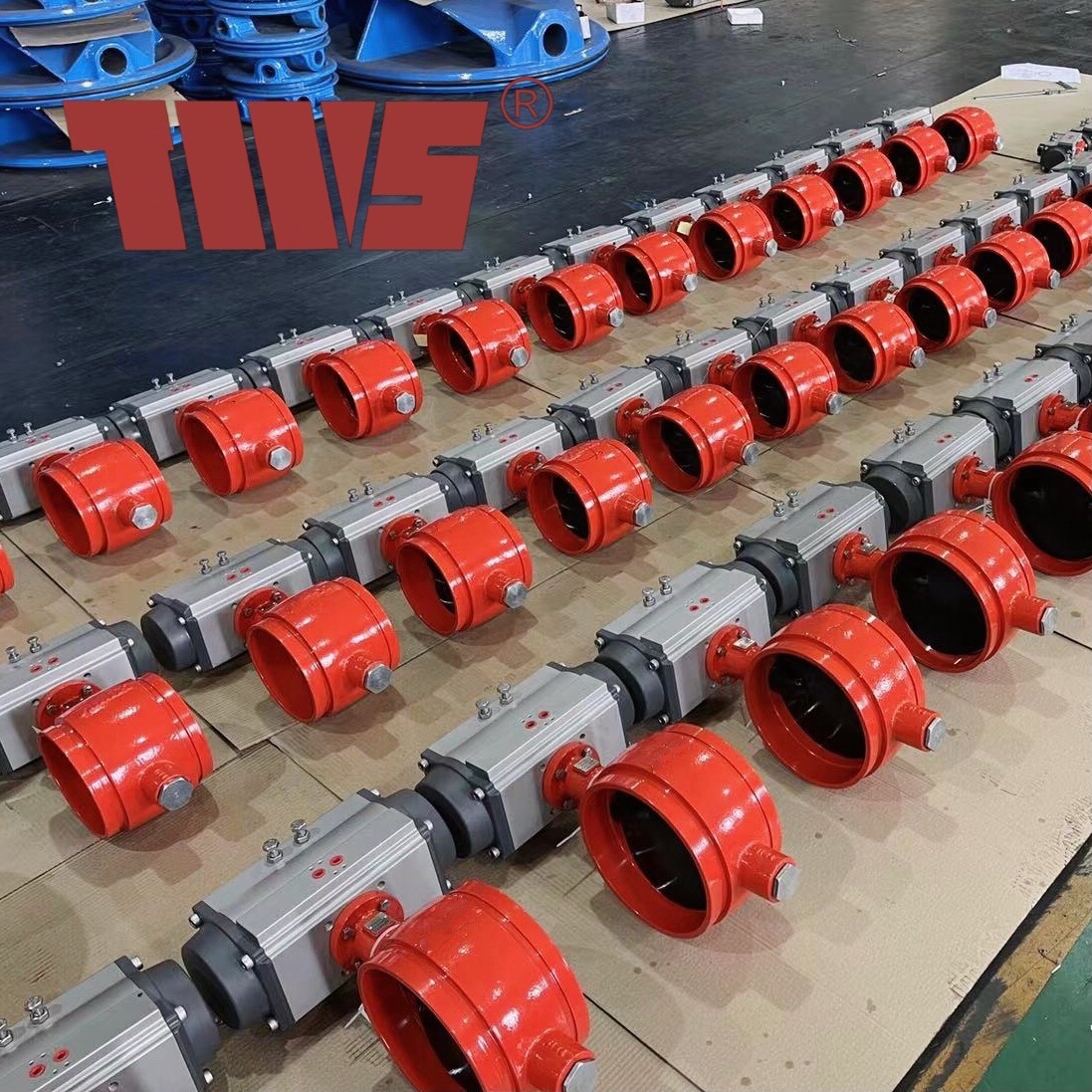Whether the selection of the connection method between the butterfly valve and the pipeline or equipment is correct or not will directly affect the probability of running, dripping, dripping and leaking of the pipeline valve. Common valve connection methods include: flange connection, wafer connection, butt welding connection, threaded connection, ferrule connection, clamp connection, self-sealing connection and other connection forms.
A. Flange connection
Flange connection is a flanged butterfly valve with flanges at both ends of the valve body, which correspond to the flanges on the pipeline, and are installed in the pipeline by bolting the flanges. Flange connection is the most used connection form in valves. Flanges are divided into convex surface (RF), flat surface (FF), convex and concave surface (MF), etc.
B. Wafer connection
The valve is installed in the middle of two flanges, and the valve body of the wafer butterfly valve usually has a positioning hole to facilitate installation and positioning.
C. Solder connection
(1) Butt welding connection: Both ends of the valve body are processed into butt welding grooves according to the butt welding requirements, which correspond to the welding grooves of the pipeline, and are fixed on the pipeline by welding.
(2) Socket welding connection: Both ends of the valve body are processed according to the requirements of socket welding, and are connected with the pipeline by socket welding.
D. Threaded connection
Threaded connections are an easy connection method and are often used for small valves. The valve body is processed according to each thread standard, and there are two kinds of internal thread and external thread. Corresponds to the thread on the pipe. There are two types of threaded connections:
(1) Direct sealing: The inner and outer threads directly play a sealing role. In order to ensure that the connection does not leak, it is often filled with lead oil, thread hemp and PTFE raw material tape; among which PTFE raw material tape is widely used; this material has good corrosion resistance and excellent sealing effect. It is easy to use and store. When disassembling, it can be completely removed because it is a non-sticky film, which is much better than lead oil and thread hemp.
(2) Indirect sealing: the force of thread tightening is transmitted to the gasket between the two planes, so that the gasket plays a sealing role.
E. ferrule connection
The ferrule connection has only been developed in my country in recent years. Its connection and sealing principle is that when the nut is tightened, the ferrule is subjected to pressure, so that the edge of the ferrule bites into the outer wall of the pipe, and the outer cone surface of the ferrule is connected to the joint under pressure. The inside of the body is in close contact with the tapered surface, so leakage can be reliably prevented. Such as instrument valves. The advantages of this form of connection are:
(1) Small size, light weight, simple structure, easy disassembly and assembly;
(2) Strong connection force, wide range of use, high pressure resistance (1000 kg/cm 2 ), high temperature (650 ° C) and shock and vibration;
(3) A variety of materials can be selected, suitable for anti-corrosion;
(4) The requirements for machining accuracy are not high;
(5) It is convenient for high-altitude installation.
At present, the ferrule connection form has been adopted in some small-diameter valve products in my country.
F. Grooved connection
This is a quick connection method, it only needs two bolts, and the grooved end butterfly valve is suitable for low pressure butterfly valves that are often disassembled. such as sanitary valves.
G. Internal self-tightening connection
All of the above connection forms use external force to offset the pressure of the medium to achieve sealing. The following describes the self-tightening connection form using medium pressure.
Its sealing ring is installed at the inner cone and forms a certain angle with the side facing the medium. The pressure of the medium is transmitted to the inner cone and then to the sealing ring. On the cone surface of a certain angle, two component forces are generated, one with The center line of the valve body is parallel to the outside, and the other is pressed against the inner wall of the valve body. The latter force is the self-tightening force. The greater the medium pressure, the greater the self-tightening force. Therefore, this connection form is suitable for high pressure valves.
Compared with flange connection, it saves a lot of material and manpower, but it also requires a certain preload, so that it can be used reliably when the pressure in the valve is not high. Valves made using the principle of self-tightening sealing are generally high-pressure valves.
There are many forms of valve connection, for example, some small valves that do not need to be removed are welded with pipes; some non-metallic valves are connected by sockets and so on. Valve users should be treated according to the specific situation.
Note:
(1) All connection methods must refer to the corresponding standards and clarify the standards to prevent the selected valve from being installed.
(2) Usually, the large-diameter pipeline and valve are connected by flange, and the small-diameter pipeline and valve are connected by thread.
Post time: Jun-18-2022



